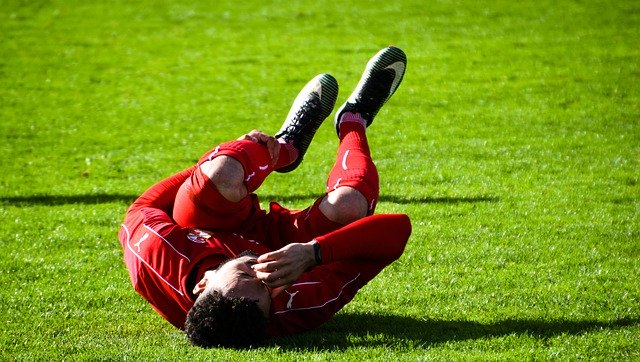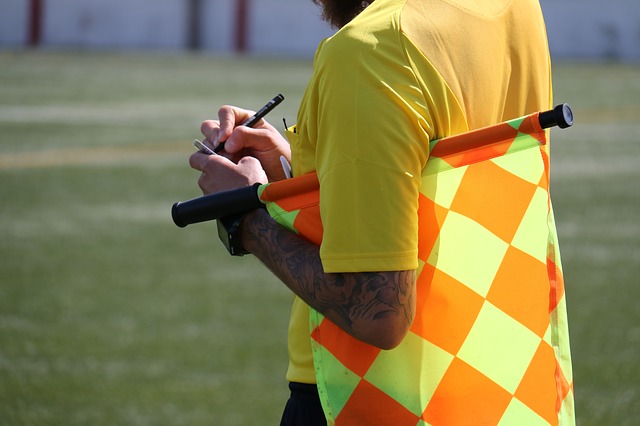Red cards in soccer are the highest form of punishment during a soccer game. If a player gets a red card, they are required to leave the field immediately and their teammates will have one less player on the field.
While red cards are less common than yellow cards during a soccer game, they aren’t very uncommon. With that said, the question becomes: how do players get red cards?
Here is how you get a red card in soccer:
1- Getting 2 yellow cards in the same game
This is one of the most famous reasons behind getting a red card in soccer. If you get 2 yellow cards during the same game, then you will also get a red card and you will have to leave the field immediately.
2- Denying an obvious goal scoring opportunity
If any player commits a foul that denies the opponent a very good chance to score a goal, then the referee will give the offender a red card.
For example, if the last defender on a team fouls their opponent as they pass them and head towards the net, then it means the defender has denied their opponent a 1v1 chance with the goalkeeper.
In this case, the defender will most probably be given an immediate red card.
Another example is when the player uses their hand to stop the ball from entering the net.
Luis Suarez, an Uruguayan soccer player, did this during a world cup game. He used his hands to block the ball from entering the net, and he got a red card immediately.
If you’re wondering how the referee determines whether or not a chance is an obvious scoring opportunity, then you can check the last section of this article as I will be talking about it in detail.
3- Dangerous fouls
If any player attempts to make any foul that can either put them in danger or put the opponent in danger, then the referee will not hesitate to give them a red card.
Safety is taken very seriously in soccer, and dangerous tackles are punished by kicking the player out of the game (a red card).

For example, a tackle from behind the opponent usually leads to a red card if the tackle was reckless.
Also, goalkeepers are in danger of getting a red card if they tackle their opponent during a 1v1 encounter with them.
4- Committing violent actions.
If a soccer player commits any violent action against any of the players on the field, match officials, fans, or any other person in the stadium, then the player will get a red card from the referee.
In other words, any small violent action that does not target the ball will result in a red card. A very famous example happened during the 2006 world cup final.
A world class player named Zidane performed a head-butt against one of their opponent players after they heard them say some offensive words.
Zidane was immediately given a red card and was sent off the field. Zidane back then was France’s best player and sending him off affected the French team severely.
Similar situations have been seen in professional soccer matches. Players hit or bite other players or other people on the field and they get immediately sent off.
Some coaches have also been guilty of violent actions on the field. For your info, a referee is allowed to give a red card to a coach that breaks this rule or any other rule.
5- Using insulting, abusive, or offensive language.
Players are not allowed to use any words that might trigger their opponent or any other person on the field.
Abusive language is not tolerated at all in soccer and any player that uses it will get a red card by the referee.
The same thing goes for offensive words and insults. Both players and coaches can be kicked out if they use any bad language against anyone on the field or in the stadium.
Bad gestures are also dealt with using a red card. Spitting on players, or using offensive gestures against them will be punished with a red card in soccer.
With that said, we have reached the end of the list. What remains is a question that is related to one of the points mentioned above.
What is an obvious goal scoring opportunity in soccer?
As mentioned before, denying an obvious goal scoring opportunity in an illegal way leads to a red card. But how exactly does the referee decide whether the chance had a high chance of converting to a goal or not?
Well, the referee follows the following 4 factors to decide:
1- The distance between the goal and where the offense happened.
If the player was fouled in a place that is very close to the opponent’s goal, then it means that the chance might have been a great one to score.
2- The general direction of play.
If the player was close to the opponent’s goal, but they weren’t running towards it (they were running to the sides for example or backwards), then the referee might not consider the chance to be a very dangerous one.
However, if the player was fouled while they were heading directly towards their opponent’s goal, then the referee might take this as a sign of an obvious goal scoring opportunity.
3- The likelihood of having the ball.
Would the opponent player have the ball if they weren’t fouled? If it’s a yes, and if the above factors also apply, then the attempt to score could have very well succeeded.
4- The number of defenders.
If the number of defenders remaining in front of the opponent is very small, and if all of the above factors are also met, then the chance will definitely be considered an obvious goal scoring opportunity.
And as mentioned before, if the player gets fouled during an obvious goal scoring opportunity, then the referee will not hesitate to use their red card.
So there you have it. These are the 4 factors that the referee takes into consideration whenever deciding whether a chance is an obvious goal scoring opportunity or not.
CONCLUSION
While red cards are less common than yellow cards in soccer, you will still see them when you watch a number of soccer games, and they are usually used in situations when a player has severely broken the soccer rules.
If the rules weren’t severely broken during a foul, then the referee might give a yellow card instead of a red card.
With that said, we have reached the end of this article. If you want to read more, you can check this similar article that explains how to get a yellow card in soccer.

